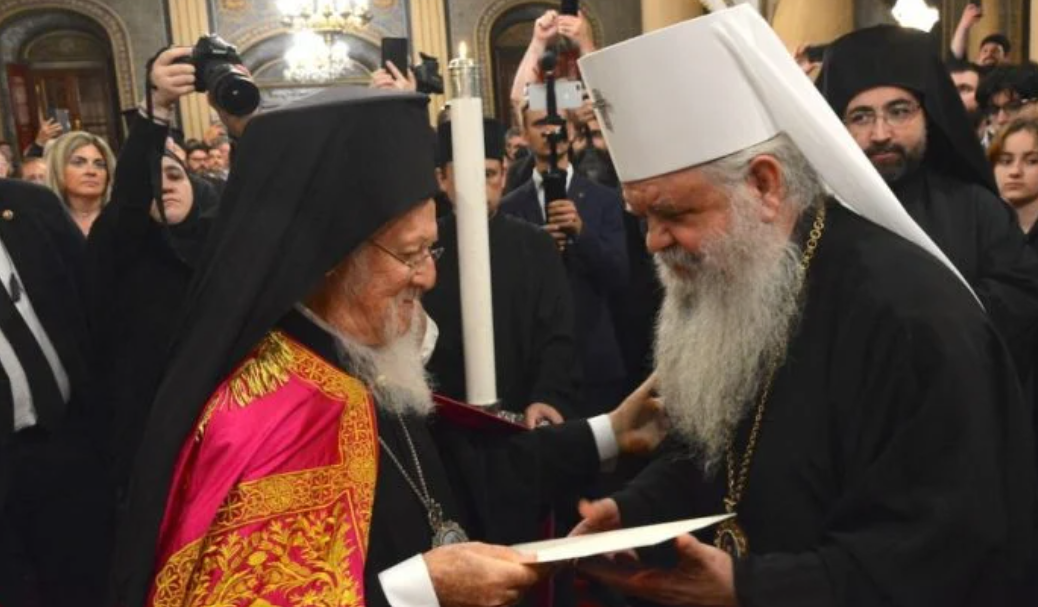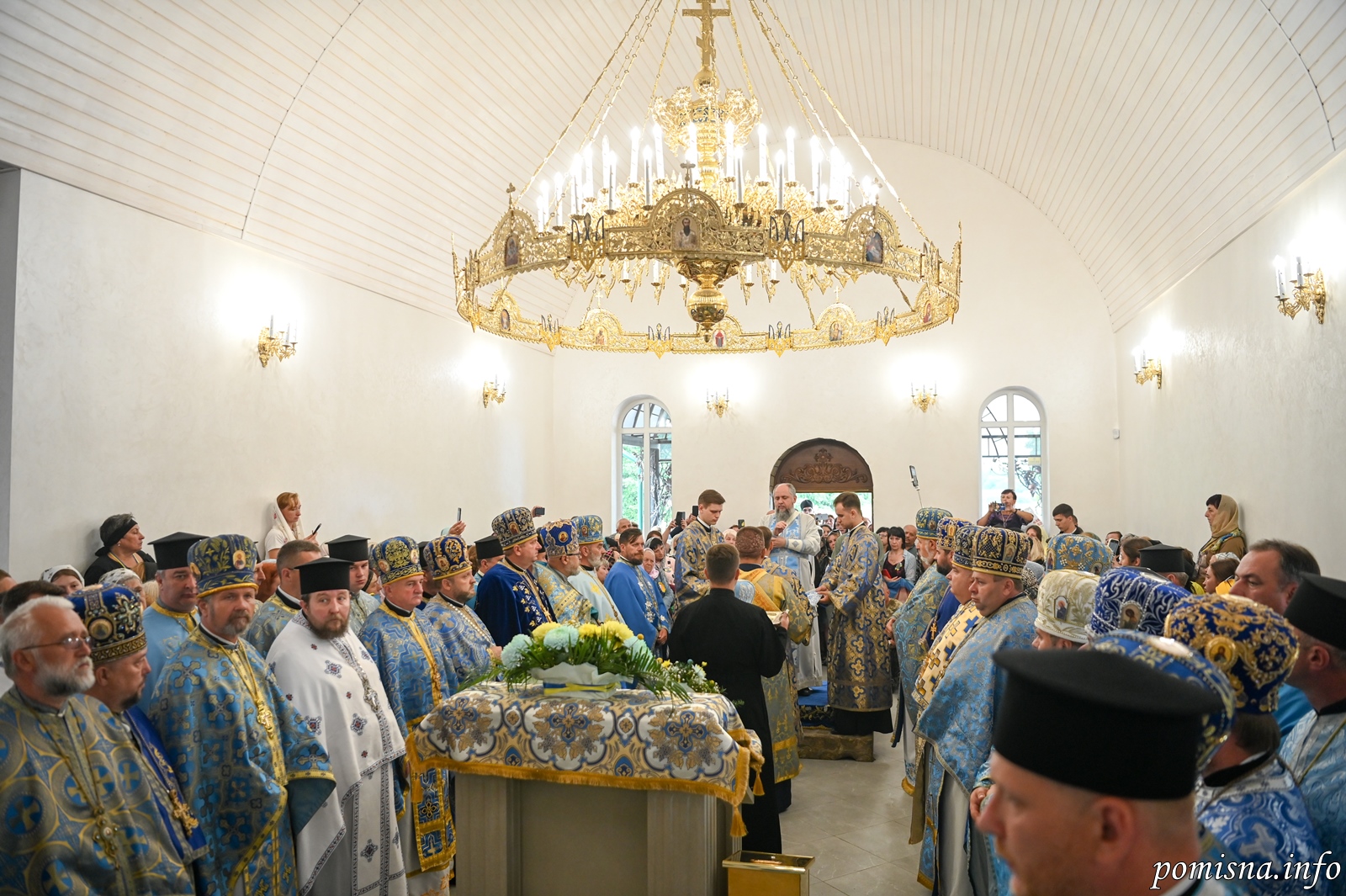Ohrid Archbishopric: Turning its back, first Prespa, now on Constantinople


At the end of February, the Ohrid Archbishopric (OA) established a commission to examine two crucial aspects of its autocephaly recognition efforts: the question of Ukraine’s autocephaly and the church’s naming. The decision took many by surprise because it hinted at a possible change of direction, a departure from the hard rejection of Ukraine’s autocephaly and working on a potential compromise over the name of the church.
Two and a half months later, just after VMRO-DPMNE declared victory in the presidential and parliamentary elections, The Ohrid Archbishopric’s Primate, His Eminence Archbishop Stefan shattered the hopes for closer ties with the Phanar. He announced that the conditions for autocephaly for the OA set by the Ecumenical Patriarch (EP) are no longer acceptable. He spoke boldly about three “no’s”: no to a name change, no to the transfer of diaspora parishes, and no to the recognition of the Ukrainian Church. Other church hierarchs and members of the Synod followed this and used it as an opportunity to attack the Ecumenical Patriarchate. Some rather worryingly repeated the wording of Russian propaganda, suggesting that EP wants to become an Orthodox Pope, the ultimate goal being subjugation to the Vatican.
Stating publicly that none of the conditions are acceptable to Archbishop Stefan can be seen as an intrusion into the commission’s work. Does the Primate know the commission’s answers before it has even concluded its work? Or did the commission conclude its work in a blazingly fast time period, and Archbishop Stefan has simply announced its findings? We will probably never find out.
However, the timing of the announcement so quickly after the elections follows the logic that the church’s Primate and the OA are adjusting to the new political realities in North Macedonia—that is, the support of VMRO-DPMNE’s sovereigntist politics, anchoring the OA in the Russia-Serbian backyard.
This is not a novelty per se. The OA followed suit when the SDSM-led government decided to repair relations with Sofia and Athens in 2017/2018. The OA first asked the Bulgarian church to be its “Mother church” and soon after adopted a new approach when the resolution of the name dispute between Skopje and Athens was in sight. OA recognised the potential in the Prespa agreement and worked with the state in a coordinated fashion (similar to the situation at the time of Ukraine’s Poroshenko) by approaching Ecumenical Patriarch Bartholomew with a desire finally to resolve its canonical status.
The church leadership in Skopje in that period was willing to follow the steps of the political elites and show flexibility and understanding of the Greek concerns. Among other things, Archbishop Stefan also promised, in writing, his readiness for the church of North Macedonia to be called Ohrid Archbishopric.
While OA’s chameleon-like strategy, depending on who’s in power, is not new, the bigger picture today suggests that the OA is not in the same boat as it was in 2017. The decision of the Ecumenical Patriarchate to bring the OA into communion with the rest of Orthodoxy and the Serbian-issued tomos of autocephaly in 2022 represents a material change. Today, the OA (rightfully so) bears the fruits of being a canonical church. The news about various churches opening up for joint concelebrations is a momentous development, against the background where for many decades, the doors were shut for North Macedonia’s believers.
However, the OA led by Archbishop Stefan has decided to implement a dangerous U-turn, perhaps unintentionally and out of naivety, succumbing to Russian interests and taking the OA further away from an agreed and final solution with the Ecumenical Patriarch. All of this is under the illusion that the middle ground and the win with the Serbian-issued tomos of autocephaly is enough. In practice, OA’s strategy means cosying up to VMRO-DPMNE, cordial relations with Patriarch Kirill, brotherly love with the Serbs and an equidistant relationship with Bartholomew. The momentum for the final settlement of the OA’s autocephaly quest is slipping away, and time is not working in OA’s favour.
The return of VMRO-DPMNE to power after its leader Hristijan Mickovski invested so much political capital in attacking the Prespa agreement and the friendship treaty with Bulgaria makes it very hard for OA to adopt and implement any policies that would be interpreted as “selling of the church’s name.”
OA representatives have repeatedly expressed pride in the name Ohrid Archbishopric and its symbolic importance, acknowledging it as the successor to the historic Archbishopric of Ohrid.
OA’s hierarchs even explained to the public that using the ecclesiological name (OA) is normal in church affairs and doesn’t differ from any other local churches.
The problem is in the scope of its usage or whether the EP explicitly asks for “erga omnes” use of the new name (for all usages and all purposes). If this is the case, this entails that administrative changes would also be required within the church to reflect this new name (e.g., updating its constitution and deleting Macedonian in the text). Any such discussions are now unlikely because it would cost Mickovski political support, which he cannot afford, at least not now, at the beginning of his mandate.
The Russian Orthodox Church (ROC) was quick to maximise on the emotionally charged issue over the name and quickly recognised the OA under “its full name (Macedonian Orthodox Church—Ohrid Archbishopric”) with no reserves on its diaspora, locking the OA’s manoeuvring space and gaining sympathy among some in the OA Synod and the public. The fast move in Moscow meant capturing OA’s Moscow-friendly hierarchs in the Russian orbit with little room for escaping.
The issue of the diaspora remains thorny as, in essence, it is a big ask. The wording used by the EP in North Macedonia’s case mirrors the text in the Ukrainian Tomos of autocephaly from 2019, which prohibits placing bishops and parishes outside Ukraine. The EP sees itself as the bearer of exclusive rights to the diaspora. To my knowledge, no other church has been asked to do this in previous cases. The Orthodox Church of Ukraine (OCU) example was perhaps less problematic as OCU inherited a limited diaspora mainly consisting of the former Kyiv Patriarchate diaspora communities, which is still not a fully resolved issue in some places. Any discussions that would substantially affect the diaspora can turn into a great revolt against the OA and potentially become a source of instability.
Since the start of the Russian invasion of Ukraine, Archbishop Stefan has shown little understanding of and compassion for the Ukrainian people. The OA was among the last Orthodox churches to condemn the Russian aggression in Ukraine. The given hand by Metropolitan Epifaniy for a joint concelebration with the OA in 2023 was promptly rejected, and the rhetoric over the non-recognition of the OCU has become sharper, mirroring the Russian position.
The problem here is two-fold. Some of OA’s posturing comes from fear of Moscow and inexperience in ecclesiastical diplomacy. The concern in the OA Synod lies in the exact scenario that unfolded last week over the co-liturgy between the Bulgarian church hierarchs and the Orthodox Church in Ukraine representatives in Constantinople. As a result, the ROC severed its relationship with those who concelebrated the liturgy. This way, the ROC also sent a message to the OA not to dare to do something similar. If the OA accepts any relationship with the OCU, even concelebration without recognition as was the case with the Bulgarian church, it would certainly affect the relationship with ROC and, even worse, it might create havoc within the OA itself. Unlike the Church of Greece and Cyprus, where the ROC pulled the same trick, OA’s resilience to overcome such development is weak.
The second problem lies in the fact that even with a possible recognition of the OCU, the OA has no guarantees that a Tomos of autocephaly would follow, as the rest of the conditions have, over time, become a hard pill to swallow. OA is now finding itself in a comfort zone, making getting out of it challenging. The few recognitions it has received in the Slavic world and the return to canonicity by the EP in 2022 is not something it is willing to risk over the uncertainty that lies in EP’s autocephaly demands.
OA’s past track record has shown that a substantial engagement with the EP cannot proceed without the active involvement of the state. Mickovski and his party have been repeating that EP-issued autocephaly is the truly legitimate aim, which suggests that there will be an attempt to resume talks in the Phanar with the state’s support sooner or later.
If the inauguration ceremony of North Macedonia’s President, Gordana Siljanovska-Davkova (also from VMRO-DPMNE), is any sign of the times to come, worsening relations with Athens will also be reflected in the church sphere. Under these conditions, OA will increasingly lean towards Belgrade and Moscow, where it feels safe and appreciated until Mickovski has worked out a way to exploit the issue for his own political gains.
by Andreja Bogdanovski*
*Dr Andreja Bogdanovski is a freelance writer covering religion and politics, specialising in the Orthodox Church.
Source: orthodoxtimes.com




